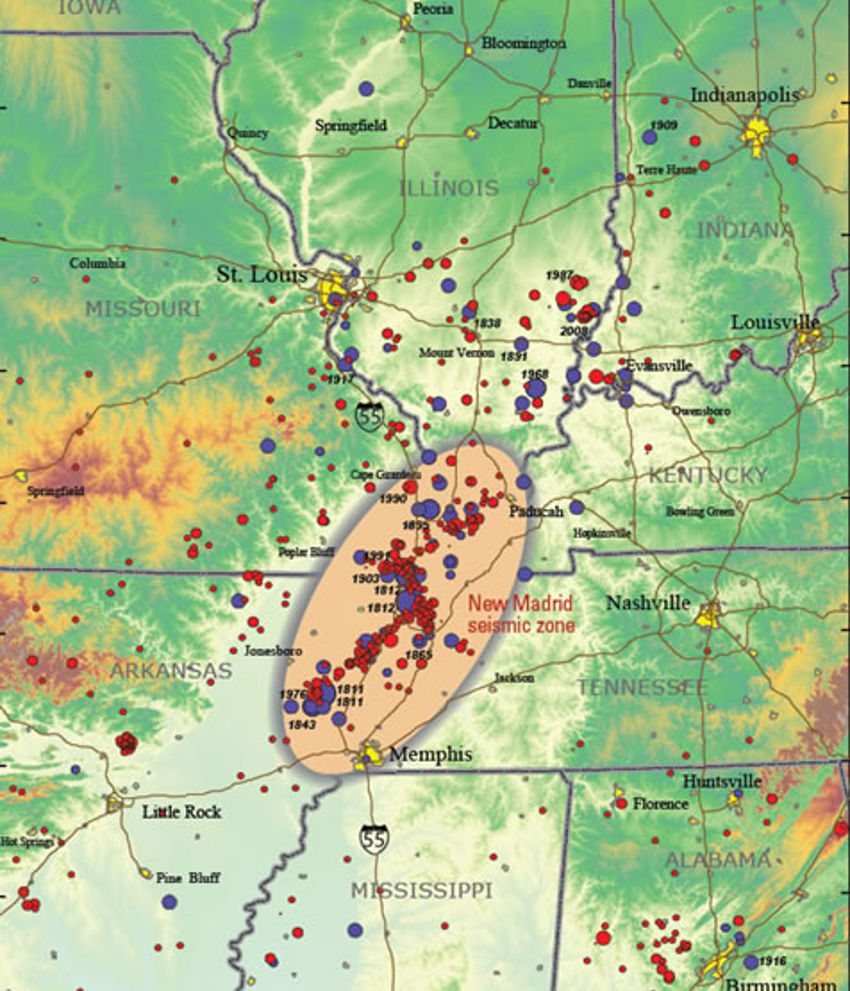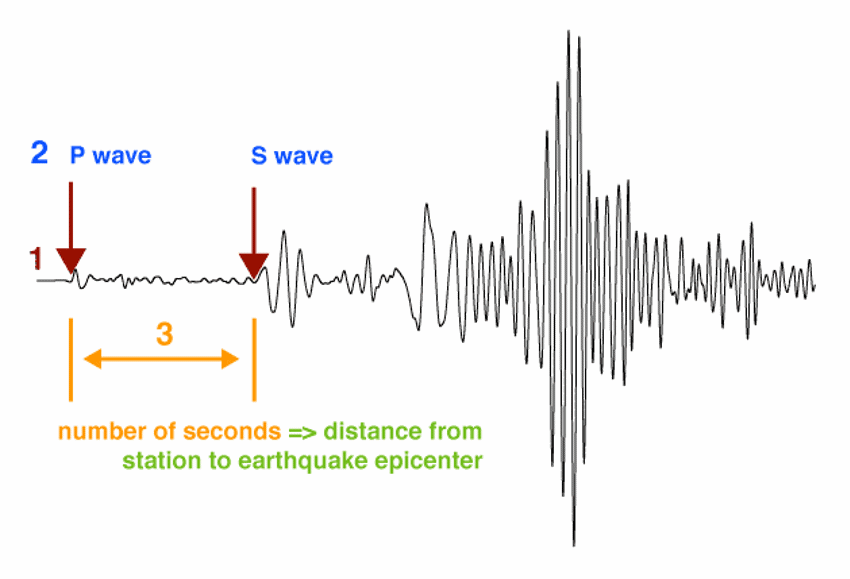Whole Lot Of Shaking Going On
Known as the New Madrid earthquake, it was one of the most violent to ever hit North America. People from as far away as Pittsburg and Norfolk, Virginia were awakened by the shock waves and the wild ringing of church bells.
The few people who lived in Missouri, Arkansas, and Tennessee were more than awakened. Huge holes opened up in the earth, swallowing some buildings. In the delta region, rocks deep beneath the earth shifted, throwing gouts of sand dozens of feet in the air. Large fissures, so wide that they could not be crossed by horseback, were formed in the soft alluvial soils. Rivers changed course, creating huge lakes in some places, wetlands in others. It was said that the Mississippi River ran backward, the water cresting with waves more than 10 ft. in height. One account in the Annals of St. Louis described his experiences like this; “I was awakened by a crash like thunder…, the ground was shaking and a great wave came back north upstream and carried us for more than a mile with the water spreading out two or three miles inland. We saw many dead bodies floating down the river.”
The earthquake was a horrifying incident and one that would forever impact the state of Arkansas. When the quakes ended, the land from Memphis to Little Rock was impassable and remained that way for years. Western Arkansas was shaken but, located on a more solid rock subsurface, escaped with relatively minor damage. In the delta, huge tracts of farmland were destroyed, along with the homes and businesses located on them. Congress provided aid by allowing people to move further west and provided free land for them. Many settled in the River Valley and in the Ouachita’s and resulted in forcing the Indian population further west.
Travel, what there was of it, was often restricted to keel boats and later steamboats moving up the rivers systems of the state. During the 1830 trail of tears movement, a group of women, children, and older adult natives were transported from Memphis to Little Rock by steamboat, there to await the men and boys who were bringing their wagons and livestock by land. Two weeks later, men were sent to locate them, only to find them near the present town of Lonoke, delayed by swamps, mud, and malaria.
Fort Smith, Arkansas would be the natural location for the Arch that now graces St. Louis as the gateway to the west. What we know as I-40 was the natural route west to the gold fields and California but the obstruction of swamp-lands left by New Madrid was just too great. Even railroads, which were expanding rapidly in the 1850s, avoided Arkansas. Only one small line from Memphis to Forrest City existed prior to the Civil War.
In teaching Arkansas history, I always inform my students that the two greatest impacts on the development of Arkansas were the Civil War and the New Madrid earthquake. Earthquakes occur in cycles, influenced by the movement of land masses pushing up against each other until the pressure becomes so great that underlying rock is crushed with resulting movement and upheaval of the earth. The Missouri Geological survey estimates that New Madrid is 30 years overdue to have an earthquake of 6.5 or above. If an earthquake like New Madrid occurred today, there would be 86,000 casualties, 715,000 damaged buildings, 7.2 million displaced people, and an economic loss of $300 billion dollars.
Most geologists feel that the region is relatively stable and we should always expect and hope for the best. Just the contemplation of the alternative could leave one with “a whole lot of shaking going on!”
~ Curtis Varnell








0 Comments:
Leave a Reply